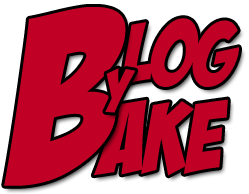In the past I have written about Victor Frankl and the many pains he had to endure. He experienced extreme suffering during the Holocaust, losing many people he loved.
Despite all that, he still was able to find meaning in life.
Frankl titled his book, Man’s Search For Meaning, because he recognized that we are all looking for meaning in our own lives. Each of us want to have something that gives us value or makes us feel important.
It is one thing to ask the question: Where can we find meaning?
Meaning can be found in our work, our family or, like Frankl, in efforts to help others find their meaning.
It is another thing to ask: Where can I find my unique meaning?
I don’t know about you, but finding my unique meaning always seems like a very difficult task. I keep waiting to find a cheat sheet or cliff notes version of my life that reveals my specific purpose.
I am still waiting…
If you are like me, maybe we are just looking at it the wrong way.
I recently read this quote by former Security of Education, John Gardner.
“Meaning is not something you stumble across, like an answer to a riddle or a prize in a treasure hunt. Meaning is something you build into your life.”
Every time I think about my search for meaning, feel I am playing the role of a detective. I picture myself as a super sleuth as I try to put together clues from my life to solve an important puzzle.
The only problem is that I am not Sherlock Holmes. I have no secret agent training and the only thing that makes me qualified to be a detective is that I own a magnifying glass. Other than that, I lack all appropriate detective equipment and preparation.
So in my most important case ever, the case of the missing purpose, I am lost.
That is discouraging.
As Gardner says, instead of looking at life like a detective, maybe I should be looking at meaning through the lens of a builder.
Instead of searching for missing pieces, I should be looking at blueprints. Rather than collecting clues, I should be assembling material. The building blocks of my unique meaning can be made up of the experiences I’ve had, the skills I possess and many of the other aspects of my life that make me, me.
While it is true that I am no engineer, and the only tool I really know how to use is a level, I feel that it is much easier to become Bob Vila than it is to become Sherlock Holmes.
Next time you are like me and feel you are hopeless in your quest for meaning, try and change your proverbial profession from detective to builder. I like our chances of building meaning much better than doing an investigation for meaning.
 Do you have a child that loves to write? Then the brand new Maury C. Moose book is for you! Titled, Maury C. Moose and 101 Writing Prompts for Kids, this writing guide features 101 story starters to help spark your child’s imagination. It is a workbook full of silly story ideas featuring your favorite characters from Forest Noel.
Do you have a child that loves to write? Then the brand new Maury C. Moose book is for you! Titled, Maury C. Moose and 101 Writing Prompts for Kids, this writing guide features 101 story starters to help spark your child’s imagination. It is a workbook full of silly story ideas featuring your favorite characters from Forest Noel.


